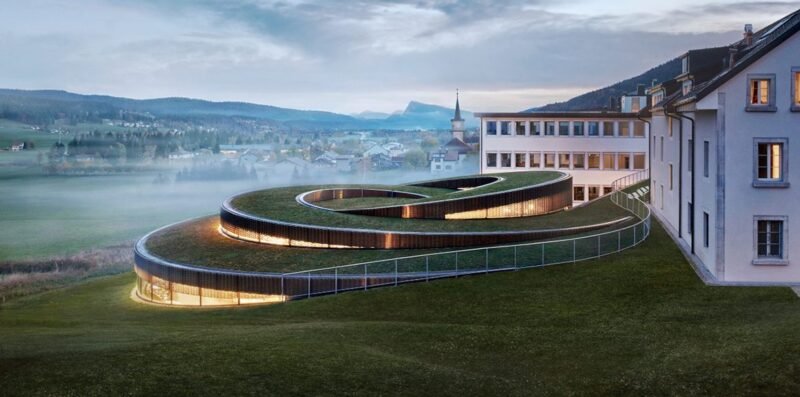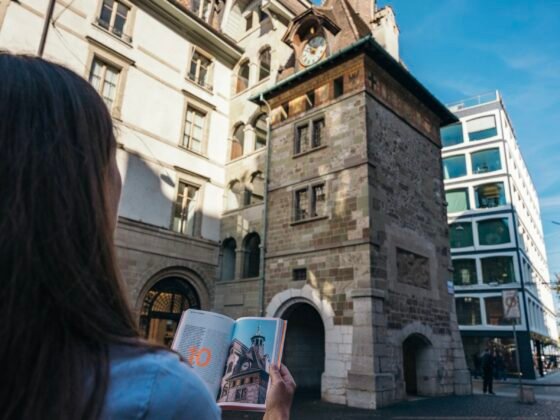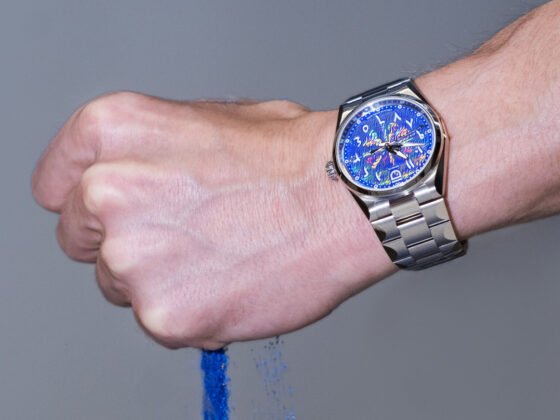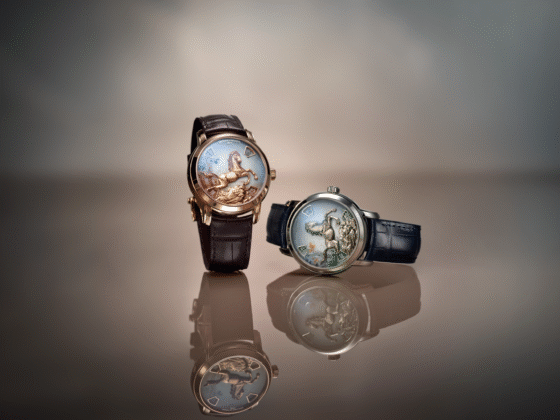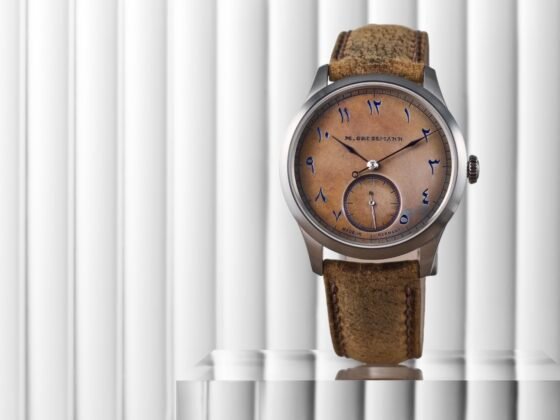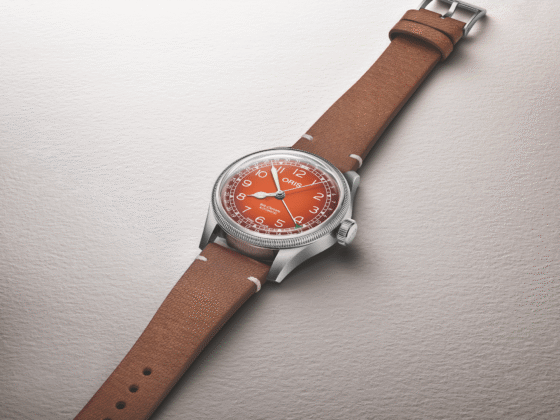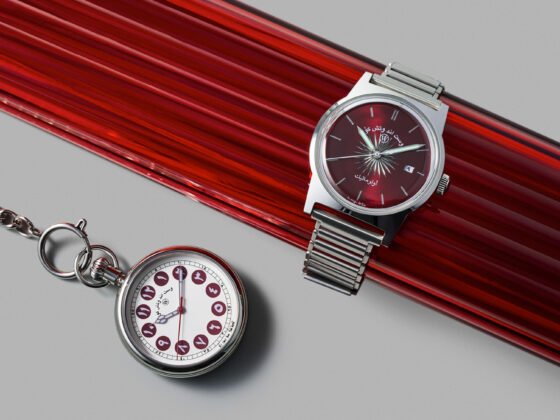The Musée Atelier Audemars Piguet immerses visitors in the Swiss manufacturer’s cultural universe past, present and future. A space of live craft and encounters entwining contemporary architecture, pioneering scenography and traditional savoir-faire, the Musée Atelier Audemars Piguet embodies the Manufacture’s free spirit and devotion to the perpetuation of Haute Horlogerie in the Vallée de Joux and beyond.
The Musée Atelier Audemars Piguet offers a unique perspective of the Vallée de Joux and of the history of watchmaking—an ambitious architectural and museographical project made possible thanks to the creativity and collaboration of a host of experts, including architects, engineers and local artisans, as well as numerous departments within Audemars Piguet. All individuals involved pushed the limits of their craft to reach new heights. This is just the beginning of an ongoing story, it takes time to create a legacy.
“We wanted visitors to experience our heritage, savoir-faire, cultural origins and openness to the world in a building that would reflect both our rootedness and forward-thinking spirit. But, before all, we wanted to pay tribute to the watchmakers and craftspeople who have made what Audemars Piguet is today, generation after generation.” – Jasmine Audemars, Chairwoman of the Board of Directors, Audemars Piguet

200 years of watchmaking history re-imagined as a musical score – To offer visitors a diverse experience with crescendos, highpoints and contemplative moments, German museum designer Atelier Brückner imagined the composition of the exhibition as a musical score. Interludes, including sculptures, automata, kinetic installations and mock-ups of intricate mechnical movements, give life and rhythm to various aspects of horological technique and design. Visitors are also invited to try their hands at some of the ancestral techniques perpetuated by Audemars Piguet’s finishing experts, such as satin brushing and circular graining. The visit culminates at the centre of the spiral with the display of Grandes Complications.

Housing over 300 watches of exception – The showcases spanning over two centuries of history display more than 300 watches, including feats of complication, miniaturization and unconventional designs. The Manufacture’s complicated masterpieces are located at the centre of the spiral, where the architectural intensity is at its highest. The astronomical, chiming and chronograph complications that have been at the core of Audemars Piguet since its establishment are orbiting around the ultra-complicated Universelle pocket watch from 1899. Inspired by the solar system, the spherical showcases of this section evoke the astronomical cycles of time at the heart of watchmaking.
The watch exhibition ends on a rich collection of Royal Oak, Royal Oak Offshore and Royal Oak Concept.
Paying tribute to generations of human talents – Complementing the display of complicated timepieces, the Musée Atelier Audemars Piguet showcases the Manufacture’s ancestral savoir-faire through two specialised ateliers situated at the heart of the spiral. Looking at the past, present and future, these two ateliers, where some of Audemars Piguet’s most intricate creations are still produced today, embody the Manufacture’s uncompromising spirit.

A window on the Vallée de Joux and Audemars Piguet’s craftsmanship – The Musée Atelier’s spiral-shaped pavilion rises on walls of structural curved glass. A feat of engineering and design, it is the first construction of its kind to be built at such altitude. The curved glazing entirely supports the steel roof, while a brass mesh runs along the external surface to regulate light and temperature. The green roof further helps regulate temperature, while absorbing water.
The spiral has been designed to perfectly integrate the surrounding landscape. The floors follow different slants to adapt to the natural gradient of the land and provide the basis of the museum’s inner layout stretched into a linear continuous spatial experience. Inside, the curved glass walls converge clockwise towards the spiral’s centre, before moving in the opposite direction: visitors travel through the building as they would through the spring of a timepiece.

Delving into the historical house – Connected to the glass spiral, the historical house welcomes visitors into a world of ancient woodwork and stone. It is at the top of this historical building, where natural light abounds, that Jules Louis Audemars and Edward Auguste Piguet set their workshop in 1875. This restored building now houses the register room, the archives, the Heritage Department, the Audemars Piguet Foundation, as well as the Restoration Atelier. Thanks to a sensitive design and construction intervention, this Atelier was re-established on the top floor where Audemars Piguet debuted. It is there that a handful of highly specialised watchmakers perpetuate the rare ancestral expertise required to restore antique timepieces to pristine condition. The watchmakers’ benches have been entirely recreated by local artisans committed to preserve traditional craftsmanship.
Visitors will also have the opportunity to discover how the brand lives around the world today through varied immersive exhibitions in the vaulted basement of the historical house.
Taking roots – The Musée Atelier Audemars Piguet also houses the Audemars Piguet Foundation, which has contributed to forest conservation through environmental protection and youth awareness-raising programmes since 1992. The Foundation is honoured in the museum’s atrium. An amelanchier (Amelanchier rotundifolia) will be planted and housed for a duration of two years in this open space to pay tribute to the Manufacture’s roots in the Vallée de Joux, as well as to the Foundation’s engagement in forest conservation within Switzerland and worldwide. The tree will then be replanted as part of a local project sponsored by the Foundation.
Preserving forests, educating children to the environment, restoring biodiversity and valorising traditional knowledge are the Foundation’s top priorities. Its approach aims to initiate, through the projects funded, a virtuous circle of sustainable development, by and with local communities.

An artistic lens – Furthering the company’s cultural and artistic engagement, the Musée Atelier Audemars Piguet will also be a fitting exhibition venue for some of the travelling artworks created by the Manufacture’s commissioned artists.
For the opening of its Musée Atelier, the Manufacture will exhibit commissioned artworks by long-lasting friends of the brand Dan Holdsworth, Quayola and Alexandre Joly, which offer a creative interpretation of Audemars Piguet’s origins in the Vallée de Joux.

